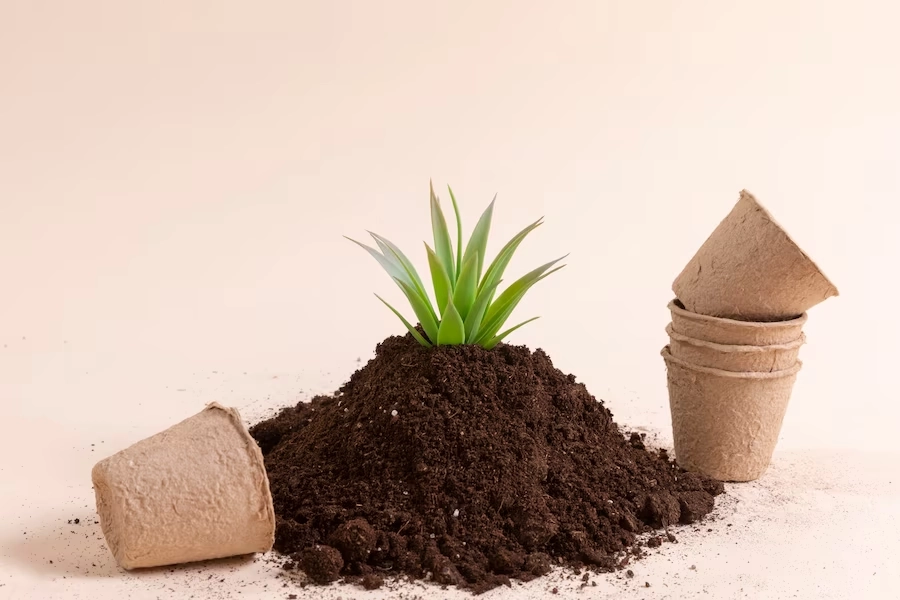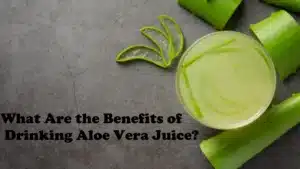The Best Soil for Aloe Vera of 2023
Aloe vera has medicinal powers, but you’ll need the best soil for it in order to reap its benefits. A desert plant always adapts to its environment – aloe vera grows best in dry, well-draining soil and needs regular watering. In addition to being super easy to overwater, aloe must not be watered as well. Good soil will keep just the right amount of moisture to keep your aloe nourished all day long. How to find the best soil for aloe vera and where to find it is the topic of this article.
Aloe vera plants need potting soil rich in calcium and magnesium
In addition to most toasty apartments, aloe vera grows well in arid, tropical regions around the world. Adaptable to warm, bright, and dry conditions, this succulent can survive in most climates. Aloe’s spiked leaves are prized because they contain moisture that the plant can drink between rainy days. Furthermore, a very shallow, fibrous root system likes dry conditions, not dehydration (yes, there is a difference).
Aloe generally appreciates weekly or biweekly watering, depending on the indoor conditions and its size. A good pot, good placement, and a consistent watering schedule will keep your aloe hydrated and happy. If you’re looking for the perfect soil pairing for your aloe plant, look for good drainage.
The soil in which you plant aloe vera has to drain well, and the pot needs to have drainage holes. In this way, you will prevent water from sitting in the pot, which could cause root rot or fungal growth.
Due to their tradition of drying out for several days at a time, aloe plants’ shallow roots can be easily damaged by excess water. A little space is enough. A bigger pot holds more water than one that’s smaller, and a sturdy pot is all aloe needs (even though it gets top-heavy).
In a week or two, the pot should dry out completely the best soil for the aloe vera plant with the short roots thriving in the upper layers of the topsoil. Depending on the size of the plant, the pot will vary in size.
Air circulation. Aloe plants, by nature, prefer well-drained soil that is dry and close to the surface. Using a thin stick to poke into the soil every once in a while will give the roots more oxygen. As you water the plant, you will be able to provide more oxygen to the roots and in compact the soil over time, thus allowing water to drain more efficiently.
Light fertilizer for plants.
Plants that grow in desert environments require less fertilization than those that grow in other environments. As an aloe plant grows in the spring and summer, it only needs a little fertilizer during its growing season.
A neutral to slightly alkaline pH is ideal to grow aloe vera in its natural habitat due to its low quantity and dry soil. By checking your plant’s soil profile for nutrient levels and pH levels, you can determine whether it is comfortable in the growing medium.
A symptom of the wrong soil for your aloe vera speaks through its leaves. When our plants are happy, sad, depleted, anxious, overwhelmed, and overjoyed, their colors change. LOL, you get the idea. When aloes are planted in the wrong soil, their spikey leaves will tell you.
If your aloe plant’s leaves droop, turn brown at the tips, or dry and curl inward, they can become droopy. If your aloe plant’s leaves are yellowing or showing any other signs of distress, you can change the best soil for the aloe vera plant to help correct the problem. For this plant, soil that is too dry is not as damaging as soil that is too wet, but both can cause problems in the long run. You just might need to change your potting soil scenery if your aloe’s leaves are drooping.
It is possible for aloe vera leaves to drop, indicating dehydration or the beginning of rot or root infection. It may be that the plant is not getting water frequently enough, or the soil is not retaining moisture well enough. Overwatering or too-quick-draining soil can stress the aloe and cause the roots to rot, or fungus can compete with the plant for resources.
Fungi may compete for water resources with the plant if there is too much-wet soil. It is the tips of the leaves that receive the most moisture, so when the level falls, they are the first to stop receiving it. A wet soil, on the other hand, can be a sign that the roots are stressed or damaged, and cannot absorb water. The leaves are turning yellow.
Yellowing leaves in aloes are usually signs of root rot. It is impossible for the best soil for aloe vera plants to produce chlorophyll when it cannot absorb moisture and nutrients from the soil.
When leaves drop as a result of overwatering, yellowing can occur, but it doesn’t always. Curled leaves are caused by dry weather. Dehydration can be recognized by a full leaf that begins to dry, shrink, and curl.
Aloes that have been under-watered, or that are in too-dry soil, will patiently wait for water, shrinking and curling their leaves as a last attempt to keep them moist, and eventually dry out completely if they are not watered. An infection caused by fungi.
An aloe plant’s shallow root system allows it to thrive in drier soil, but a fungal infection in damp soil can damage it quickly. There will be competition for resources in the soil, and the fungus will invade and eat away at the roots of plants. A fungus growth in the soil may also cause fungus gnats to reproduce, which survive on the fungus.
Here are some tips for making the best soil for aloe vera plants:
If you have the following ingredients, you can mix up your own homemade aloe potting soil: Regular potting soil Coarse material growing medium (pine bark, orchid bark, sand, coco coir, perlite, sand, dried Sphagnum moss, Leca) Aloe vera roots will have a well-draining environment if they are planted in a 50/50 mixture of regular potting soil and coarse materials. Make sure this soil mixture has completely dried out before watering again.
Store-bought aloe vera potting mix
If you’re not interested in mixing your own potting soil mix, there are many pre-mixed potting soils for succulents that will provide the right growing conditions. Our favorites are listed below:
- Blended Aloe Vera and Succulent Soil Mix – This blend is made up of peat moss, perlite, and sand, all of which help with drainage. Lime is also included in the mix to keep the soil alkaline, which is ideal for the aloe plant. Planting Mix for Succulents by Miracle-Gro –
- There are some coarse forest materials in this soil as well as sphagnum moss, which is helpful in draining water from the soil. As a result, your aloe stays hydrated so well between waterings that it can last for approximately a week or two without needing to be watered.

Faisal is a Passionate blogger. He has been sharing his knowledge and expertise on natural remedies and wellness through articles on honeyaloevera. As a firm believer in the power of nature, He has been researching and writing about the benefits of honey and aloe vera for years, with a keen interest in educating people about how these two amazing ingredients can help them achieve a healthy and happy lifestyle.








Recent Comments